
AVAware's Newest Innovation: User Accounts in the Cloud!
It's That Time of Year Again
Allegion Plc
AVAware Extends its Presence in Social Media
AVAware Welcomes our Newest Partner: Dorma USA

 U.S. Price Books: U.S. Price Books:
- Arrow
- Best
- Bobrick
- Cal-Royal
- Dorma D.C.
- Dorma E.D.
- Dorma L.K.
- Folger Adam
- Hager
- HES
- Markar
- McKinney
- Norton
- Pemko
- Reese
- Rixson
- Rockwood
- Schlage
- Securitron
- Stanley
- Stanley Commerical
- Stanley D.C.
- Stanley Precision E.D.
- Yale
 Canadian Price Books: Canadian Price Books:
- Adams Rite
- Arrow
- Assa
- Bobrick
- Folger Adam
- HES
- Markar
- Norton
- Rixson
- Securitron
|

|

|
|
Over the past year, AVAware’s development team has been developing a number of exciting new technologies that will dramatically change the way users are able to manage and deploy applications such as AVAproject, AVAcad and Fusion throughout their companies. The first of these technologies, and one on which many of the others will be based, is cloud-based user account management.
While the serial numbers that each user’s key contains also serve to
|
AVAware has taken a truly innovative approach to this task, by managing the user accounts – complete with permissions – in the cloud. Users can “log in” to AVAproject from anywhere that has an internet connection, and best of all – that connection does not have to be maintained constantly!
Let’s take it back a step...
User accounts are set up using a web interface that is accessible through the client portal on the AVAware website. A company’s system administrator sets
|
up accounts for users, identifying them with their email addresses. The management system automatically deploys an email to each user and asks them to validate their account – the same way one would with services such as Google, Twitter or Facebook. Once ‘validated’, the user can log into the AVAware website using their individual credentials instead of using the one assigned to the company. The immediate benefit is that system admins may now restrict specific functions of the client portal for any given individual.
|
|
identify them as “company users”, in order to provide permissions and data tracking on a user level, it is necessary to be able to identify individual users across the enterprise. Traditionally this is managed through network servers that are located in some central office and connected to using a VPN-type connection. Although this does get the job done, there are two major problems with this approach. First of all, users are forced to maintain a constant connection to the head office server. Without a constant VPN connection, users lose access to their data and in most cases their application as well. The second issue is obviously ‘fault tolerance’; not only does the user need a good connection on their end, but central server must be up and running with its own incoming connections in good working order. If any one of these components fails... employees get an unexpected holiday.
|
 The AVAproject user login dialog
|
|
The same functionality that is offered to manage access to the website also extends to the application software. When a company has enabled ‘user logins’ (via the web management system), their users are asked to “log in” to AVAproject when they launch the software. Just as they would with the website, users identify themselves using their email address. (There is even a convenience feature that allows them to forego typing in the part after the ‘@’ every time they log in).
The application then validates their account by accessing the cloud server and downloads their individual “permission” set. At that point, the
|
internet becomes unnecessary and everything continues to operate locally – just as always. At the discretion of the system administrator, users could even be allowed a number of logins without an internet connection – for those users that need to work on remote locations or on airplanes, etc. It truly offers companies all the management functionality of a network – while preserving the flexibility found in remote applications.
The user accounts have a number of other interesting features; the most notable is the ability for a company to designate logins as “optional”. This is a feature that is never found in traditional
|
network environments; in fact the closest thing it can be compared to is a Google account on the web. Users accessing any of Google’s services (ie: search, maps, YouTube, etc.) can certainly make use of those services without ever “logging in” to any of them. However, they are given the opportunity to create and “login” with their “Google account” (top-right corner of browser windows). Should they elect to do so, the functionality of each of the services is greatly enhanced; search results, for example, are refined through the use of “signals” from your social graph while maps and YouTube allow you to keep lists of favorites, subscriptions and histories.
|
|
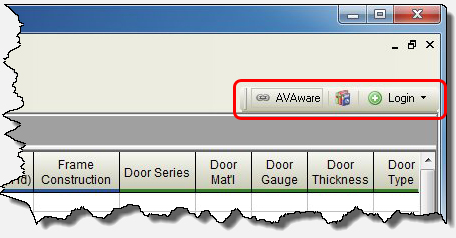 The AVAproject user login toolbar
|
AVAware’s optional login works in much the same way. At the discretion of the system administrator, certain functions can be restricted to specific users –only when they login to identify themselves. The ability to update software, download catalogs or share data on the company network are examples of these types of functions.
When “optional” logins are selected, users will see a new toolbar (depicted to the left) that offers them the ability to login and logout of the system with their credentials as required.
|
|
The ability to identify and manage individual users – especially remote ones – opens the door to a number of exciting new features:
User Activity & Usage Tracking
A reporting system can be established that would allow company management to view logs of each time the software was accessed by any given individual. Such tracking could also include location information and a summary of the project files that were accessed during that session. It would be possible to produce highly precise and granular pivot tables that reflected software usage and time spent on any given project throughout its life cycle – regardless of the physical location of the users.
Software Access Control
As is often done with network-based software, a permission set can be established and linked to each individual user account. This would allow management to restrict certain software features and functions for specific users. For example, hardware estimators could be prevented from
|
door/frame related changes and operations. Most likely, highly sensitive operations (ie: file exports, ERP integration) would be restricted to only those users that require access to them.
Project File Encryption & Access Control
A really exciting new possibility is in the area of project file security. Even in a traditional network environment, all the security measures that are in place become meaningless the moment the file leaves the protective confines of the server. By encrypting the project files themselves and encoding them with key/user information, it would be possible to create files that can’t be opening by anyone that is not specifically authorized to do so. For example, files can be locked to open only for select users, or those that know a set password. As a system default, all projects could be encoded such that they would only open in the presence of a company-owned AVAware key. That would prevent outside parties from accessing data contained within a project file even if they had their own copy of AVAproject available.
|
Automatic Project Change Tracking
In addition to basic user tracking information, the system could be setup to automatically track changes performed to a given project file as well as which user is responsible for making those changes. In fact, the system could track each time a user opens a file – or perhaps any time they export the data to another file format.
This list of possibilities goes on and on. There are many more use cases and potential applications that weren’t listed here, some of which will be launched throughout this coming year. It is the hope of the development team to introduce major new features with each coming software release.
The ability to create individual user accounts is available to all AVAware users immediately. The feature will be enabled “by default” in the client web portal in the next few months. In the interim, those wanting to get started immediately need only contact technical support to have the feature enabled.
|
|
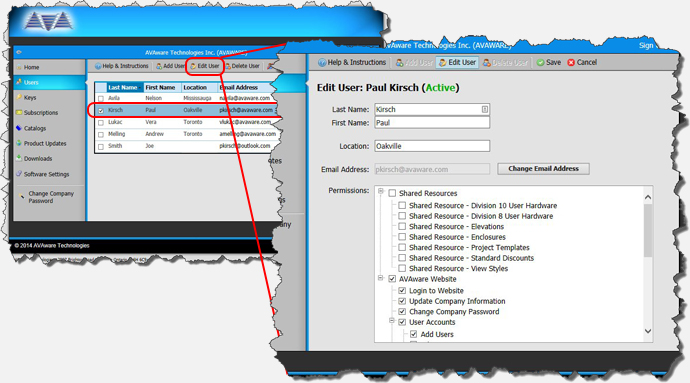
An administrators view of editing a user with the AVAware website user manager, displaying user security permissions
|
It's That Time of Year Again
|

|
After taking a break in 2013, the annual DHI convention is back – at a different time of year and with a new schedule.
|
|
Industry veterans have clearly noticed that something was missing in 2013 – the all-familiar DHI convention. The annual event that brings together distributors, manufacturers and all the related disciplines that drive the architectural openings industry to one place for some much anticipated face time. The absence of this event in 2013 left a void in the industry; one that was felt by all... or was it?
The DHI convention has certainly had its challenges over the past decade or so. The massive consolidation of manufacturers in the early part of the millennium saw the number of exhibit booths at the show drop dramatically in the years that followed. Companies such as Assa Abloy whose various brands (ie: Sargent/Essex, Yale-Corbin, Curries, Graham, Ceco, etc.) all used to occupy their own booth
|
As a result, some vendors have elected to exhibit only in alternating years; both as a cost saving measure and in recognition of the fact that fewer clients were making the trip in recent years.
Given all of this, perhaps the “year off” was exactly what the venerable convention needed. In 2012, the DHI had re-branded the DHI conventions as “CoNEXTions” the “DHIndustry Convention”, presumably in an effort to rejuvenate the show and differentiate it from its past incarnations. Although we still not clear about the correct pronunciation of new name, the strategy does make sense.
Perhaps even more importantly than the return of the DHI convention in 2013, are the signs of economic
|
recovery seen throughout this industry and others over the past year. After the economic devastation in 2008, we are seeing a renewed confidence in the economy, an increase on the global value of the U.S. dollar and a much-needed willingness on the part of business owners to make capital investments in their businesses. The construction industry is not only a principle economic indicator, but a vital driving force for the economy at large.
Like many exhibitors, AVAware is looking forward to a very successful convention this year. By moving the event to the spring time - and especially by making it a “week end” event again, the show organizers have created a tremendous sense of optimism around the event.
|
|
spaces, now share a single common space. The same can be said by others such as Ingersoll-Rand (now Allegion) – anyone remember Newman Tonks?
While this consolidation obviously resulted in a much “smaller” show (at least in terms of booth count and size), other factors such as the reduction in number of hours and the move to a mid-week event had an impact as well. Gone were the much-anticipated social events such as Hager’s Saturday night extravaganzas and the late Friday night hospitality suite circuit.
|

|
|
Even the show location is ideal; the Hilton Anatole hotel in Dallas is an absolutely ideal location; it last hosted a DHI convention in 1999 – coincidentally, the first time AVAware was an exhibitor. Attendees and exhibitors alike greatly appreciate having the meeting and exhibition halls within walking distance of the hotel; not only does it save time and expense, but it even goes so far as to make attendance at many functions feasible. Events such as the Industry
|
Marketplace had a difficult time attracting attendees in such location as New York city, where one would have to eat breakfast at a ridiculously early hour to allow sufficient time for morning line-ups, busy kitchens, and to taxi from the hotel to the convention hall – all in time for a 9am start.
By all indications, this year’s convention will be the best one the industry has seen in recent history – and we’ve already begun preparations. AVAware
|
has a number of exciting new product announcements poised for unveiling at the event.
We look forward to seeing all of our clients in Dallas. For many, it is the one opportunity we get to see them in person – and we greatly cherish it.
Please visit AVAware at booth #424 in Dallas. Additional details will be published as they become available.
|
|
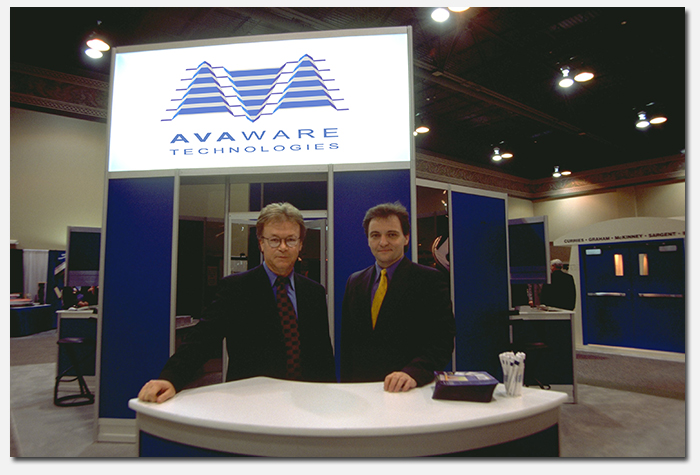 AVAware co-founders: Steve Rendulic* and Paul Kirsch man the booth during the 1999 DHI show held at the Wyndham-Anatole hotel in Dallas, TX.
* deceased
|
|
|
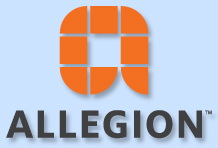
|
Allegion Plc
In December of 2013, an iconic group of brands got a new home – and a new name.
It’s impossible to speak of the architectural openings industry without acknowledging the distinction Ingersoll-Rand has achieved. Known for many of the best-known brands in architectural hardware, IR’s Safety and Security division maintained a total of 23 global brands including such icons as Schlage, LCN and Von Duprin to name a few.
|
|
Despite their prominence in area of architectural hardware, this division accounted for only 15% ($2 billion) of IR’s total revenue of approximately $14 billion. Meanwhile a relatively recent acquisition, Trane Air Conditioning which IR purchased in 2008 is responsible for nearly 50%. It is believed by many investors that the spin-off will help simplify the company and enhance focus.
For every three shares an investor held in Ingersoll-Rand (NYSE:IR) on November 22, 2013, they received 1 share of the shiny new spin-off ‘Allegion plc’ (NYSE:ALLE) on the distribution date of December 1st. Regular trading began the following day...
|
Effective March 3, 2014, all product catalogs from the company formerly known as “Ingersoll-Rand” will be re-released under the name “Allegion”.
AVAware has received the updated books and the catalog development team expects to have AVAproject-compatible catalogs available on or before the effective date.
|
|
|
|
|
Innovative products, outstanding support and constant communication with users are the three pillars on which AVAware has built its reputation for nearly two decades. As part of this effort AVAware has placed a tremendous emphasis on web-based resources to keep clients informed of product developments.
The ‘public’ side of AVAware.com provides news and information to clients and prospective clients, while the ‘clients-only’ area offers easy access to product updates, electronic subscriptions and other valuable resources.
In 2010, AVAware launched the AVAwire newsletter as a means by which to enhance communications with the industry we serve. The response to AVAwire has been overwhelming; it has become a much-
|
followed publication - not only by AVAware clients, but industry members at large. For the most part, newsletter editions have been released on a monthly basis. After a brief hiatus in 2013, the AVAwire year-end edition resulted in a record number of new subscription requests through our online web submission form.
|
Anyone interested in subscribing to the AVAwire newsletter, may request delivery to their email address by completing our online web submission form at:
AVAware.com/Contact
|
Beginning in 2014, AVAware will provide simultaneous notifications of news, events and product releases through a number of popular social
|
media services. In time, we hope these tools will provide new mechanisms to enhance communication – both user-to-user and with members of the AVAware team.
Over the next few months, we hope to gage the interest expressed in each of the various sites. For those who wish to see AVAware extend its presence on any or all of these services, we encourage you to circle, connect and follow us as soon as possible – so that we can determine how and where our clients can best be reached.
AVAware would like to thank the support teams at Google and LinkedIn for their kind assistance in establishing our handy “AVAware” URLs – making it even more convenient for clients and industry members to find us online.
|
|
|
 | Google Plus’ is Google’s offering in the social media arena. Generally considered to offer the best features of Facebook, Twitter and Instagram, G+ has become a favorite destination for professionals and members of many tech-related industries. From the beginning, Google is disallowed aliases and inappropriate content. This has helped attract and stimulate a higher level of dialog between community members.
In recent months, Google has made G+ the centerpiece for many of its popular services, such as YouTube and Picassa (photo sharing). The popularity of Google services on desktop and mobile platforms has resulted in tremendous growth in the G+ user base.
We at AVAware are particularly interested in developing our presence on G+ as it can offer everything from broadcast notifications to hosting conversations between AVAware and its users. AVAware can even share photos and video from various events.
“Circle” us: google.com/+AVAware |
|
|
 | LinkedIn is perhaps the most popular social media service amongst professional users. In fact, for most users it’s the first product that comes to mind when contemplating business-to-business communication.
LinkedIn has become popular with many business service providers, most notably in the employment industry. Human resource managers, employment agencies and corporate head hunters routinely rely on LinkedIn to source high-quality candidates.
“Connect” with us: linkedin.com/company/AVAware |
|
|
 | The absolute first name in social media. There is only one “Twitter” and it is easily the most often-used social media service for everyone from casual users to Lady Gaga herself.
Although it does not excel as a “discussion” forum, it does allow users to send broadcast-style messages to their various “followers”. For many users, Twitter is the simplest way to reach the greatest number of people and get their message out - 140 characters at a time.
“Follow” us: @AVAware |
|
|
 | Perhaps the oldest name in social media, Facebook is arguably giant that started entire trend – or at least jumped in at exactly the right time.
Although generally considered a venue for teenagers to share gossip and for the rest of us to locate lost friends and family, there are a number of companies and brands that still rely on Facebook to keep in touch with their customers.
“Like” us: facebook.com/AVAwareTech |
|
|
|
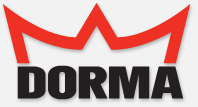
|
AVAware Welcomes our Newest Partner: Dorma USA
Dorma USA has recently rolled out AVAproject for use by their reps and specification writers to create project hardware schedules featuring their products. Dorma is making these schedules available in AVAproject format for use by distributors that use AVAware software themselves. In addition, AVAproject’s
|
|
new Microsoft Word export facility makes it possible for Dorma to create fully-formatted submission documents on demand.
AVAware would like to welcome Dorma USA and its team to the AVAware family of users. On behalf of all of us at AVAware, we look forward to a long and prosperous relationship.
|
|
|
AVAware currently maintains and distributes AVAproject-compatible versions of the following Dorma product catalogs:
Dorma Door Closers (U.S. and Canada)
Dorma Exit Devices (U.S. and Canada)
Dorma Locksets (U.S. and Canada)
Dorma Glass (U.S.) *
|
|
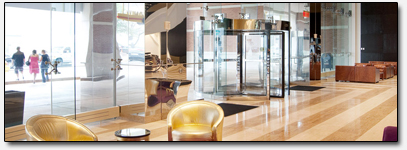
|
|
* Note: The Dorma Glass catalog is a new addition to the AVAware catalog library.
|
|
We welcome any questions, comments or suggestions about any topic mentioned in this edition of AVAwire. Please visit our website for more information, or contact us directly at (416) 239-9099.
|
|